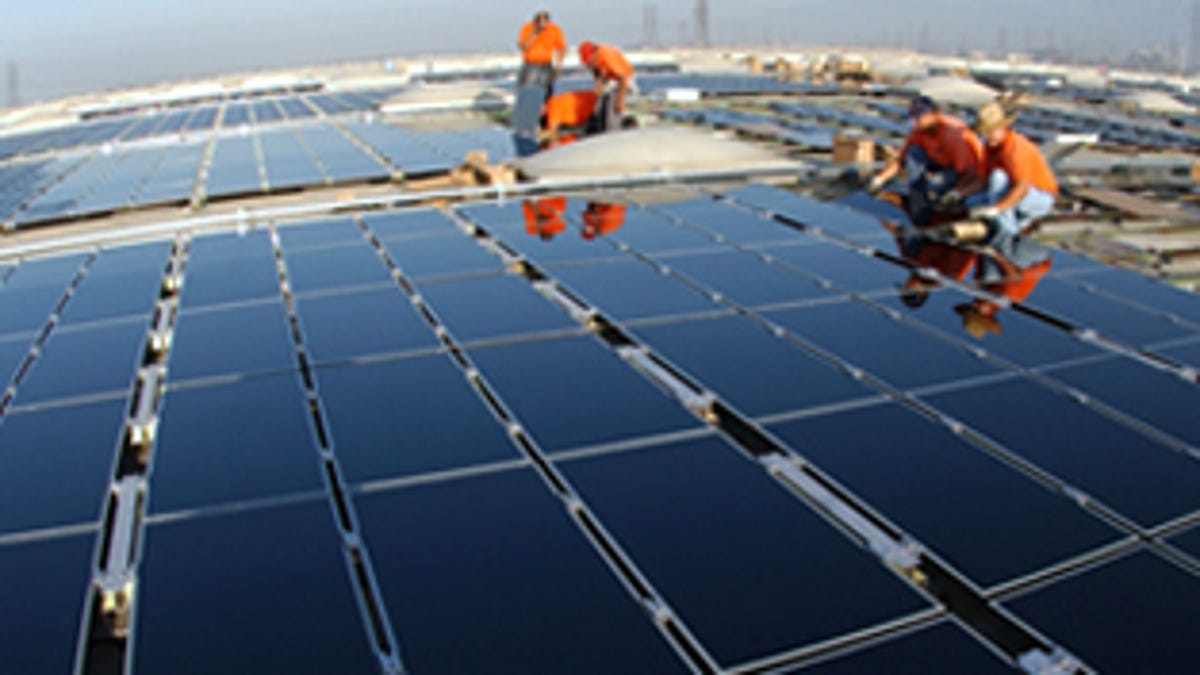Community solar gets a tryout with major Calif. utility
Southern California Edison now testing 10 integrated community solar plants on the grid for feasibility and efficiency.

Southern California Edison announced yesterday it has added seven new community solar plants to its energy repertoire that together generate enough electricity to power the equivalent of 8,125 households.
SCE now has a total of 10 community-size solar stations, a network of small neighborhood solar stations, which consist of mainly rooftop solar installations on local buildings, connecting to its grid.
Four community solar stations in Ontario, Calif., for example, consist of 32,950 photovoltaic panels installed on the rooftops of warehouses owned by ProLogis. SCE leased what amounts to about 1.8 million square feet of roof space from the company. Together the solar plants generate about 5.5 million watts of electricity.
SCE's announcement illustrates one movement in the U.S. toward using integrated community-size energy plants distributing electricity locally, as opposed to large plants that sometimes necessitate long-distance transmission to get the electricity to consumers.
So far, the community-based projects that have gotten the most attention are largely based on wind. Several wind turbine manufacturers are targeting community-based energy generation, and developing mid-size products that could be accommodated on local rooftops or minimal amounts of land. In May 2010, American Wind Energy Association also announced that sales of small-wind turbines had grown by 15 percent.
But not everyone is keen on community-based energy projects. The "not in my back yard" phenomenon is strong with many community groups voicing concerns over noise and visual obstructions when it comes to wind turbines. Solar might have a better chance as it's quiet, and less visually intrusive since it mainly consists of photovoltaics installed on rooftops.
In the case of SCE, the utility is being cautious, currently awarding only about 29 contracts for building and supplying such community-based projects until it can assess whether the method works based on the results of these current installations.
"One of SCE's objectives is to study the impact on local grid reliability, so that these distributed energy resources can be interconnected safely. Lessons learned during deployment of SCE's solar photovoltaic project will be shared with other utilities and the solar industry to foster similar efforts," the company said in a statement.

